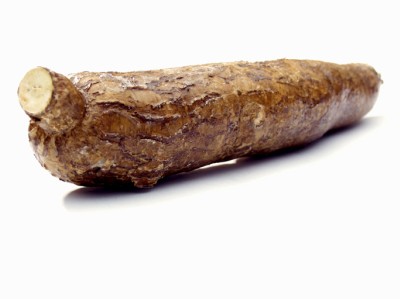Neolithic DevelopmentIn about 4000 BC the neolithic agricultural transition was taking place around the world, which meant that most of the world was making that change between hunting and gathering to a settled, agriculturally stable environment, which supported animal domestication and an exponentially growing human population. In South America, however, potatoes and manioc were the main crops that were domesticated and able to grow and thrive in the hot and humid climate. Manioc, also known as cassava or yuca, is a woody shrub, an annual crop in the hot and subtropical areas of South America, which is a great resource of starch and carbohydrates. Its flour is used to make a wide variety of dishes in South and Central America, as well as a form of liquor in the Amazons. Loreto Region of PeruLoreto is by far the largest region in Peru and one of the least densely populated ones. Its capitol is Iquitos. This region covers 1/3 of Peru's territory, and is located in the far northern area of the country, being covered mostly by dense, thick, rainforest. This region has wide river plains, which are often covered completely in rainwater and are very swampy the whole year. In and surrounding the numerous lagoon areas are abundant and healthy grass vegetation. The Amazon Hydrographical System runs through Loreto with several rivers such as the Putamayo, which serves as part of the border with Colombia in the north, and the Yavari River which runs from Peru in Brazil; As well as the largest, the Amazon river is the main river crossing through this region. It is very winding and incredibly difficult to follow, the lowest width being one mile, or 1.6 kilometers up to 48 miles, 30 kilometers.Quality of Life in LimaLiving in Peru can be very stressful. |
II Agricultural RevolutionThe second agricultural revolution coincided with the industrial revolution that was taking place throughout the world. In the Americas, the corn and potatoes that were grown and cultivated here were taken to Europe, mostly Great Britain, Denmark and neighboring countries. During this time methods for fertilization, soil preparation, and harvesting were improved dramatically, an example would be the discovery and development of Guano, which was utilized around the same time. by the 1830's, farmers were feeding livestock artificial food and using new fertilizer methods around the world.Green RevolutionThe Green Revolution of Peru is just winding down from the 80's and 90's into a comfortable state of neo-colonial agriculture, in which agriculture is a commercial suit instead of a supported economic system. However, some recent happenings involving green agriculture are still occurring however slightly they may be; Such as in July 2010 Peru mandated that all food products in the market must be labelled in they have genetically modified ingredients.Humboldt CurrentThe main bio-climatic zone in Peru is the Humboldt current, which is a cold and low salinity ocean current. It flows in the direction of the equator. The Humboldt, or Peru current is leveled as a Class I, highly productive ecosystem and is in fact the most productive marine ecosystem in the world. The Humboldt Large Marine Ecosystem, also known as LME, has one of the major upwelling systems in the world and supports all kind of underwater diversity. It is known for its primary and secondary productivity which supports the worlds largest fisheries; They harvest mostly sardines, mackerel and and anchovies.Occasionally the LME is disrupted by the El Niño Southern Oscillation. It is a temporary change in the ocean climate and often results in rapid fish redistribution, they are significantly affected, which results in stock crashes and cascading social and economic impacts. The fish are killed or unable to be eaten by El Niño Southern Oscillation and prices of sardines, anchovies and mackerel skyrocket.GuanoDevelopment in the 19th century of the Inca fertilizer Guano was one of the most important resources of Peru, for its use as fertilizer and also gunpowder. As the habitat and climate on the Guano islands located on the coast of Peru was very wealthy, there was a very large supply that had grown over hundreds of years. The coast of Peru had drawn lots of different bird species such as white-breasted cormorants, grey pelicans, and piqueros flourished because of the lack of predators. The bird droppings, or Guano, left behind from the birds remained because it was able to retain a large amount of nitrate from the arid climate. in the early 1800's, Peru sold twenty million tons of Guano, mostly to Great Britain, and made about two million dollars in profit. The Manioc Root |
|
|
||